Show Your Artistic Side
For garden center owners who are not well versed in art and artistic styles, works of art may be the last products they would ever consider selling. Yet, the art industry can be quite accessible, especially when you realize almost anything can be perceived as art from priceless works hanging in museums to the finger paintings your kids hang on the refrigerator.
This is because the definition of what is and what is not art lies largely with each individual, which makes the category quite broad: Furniture, sculpture, paintings and even some landscaping projects all can be perceived as art.
For garden centers, carrying art can mean creating an in-store gallery area to house pictures and paintings or focusing on outdoor garden pieces; it can mean working with local artists to carry original works or bringing in mass-produced artistic reproductions. No matter what type of art you choose to carry, you can be sure you are offering customers something new and unique to stylize their homes and gardens.
Industry Overview
Like art itself, the art market is hard to quantify. This is largely because it is not regulated: Art can be created by anyone and sold anywhere for a range of prices (a quick search for “art” on Ebay helps prove this point). Despite how broad the category is, those who directly deal in the art business have a good idea about the state of the industry.
Alan Bamberger, an art appraiser and consultant who also writes about and critiques art, feels the market is currently pretty healthy. He sees a lot of people interested in young art stars artists who are thought to be on the verge of a healthy career.
Consumers from a variety of demographics help fuel the industry. Pam Danziger, president of Unity Marketing, pointed out, “The traditional market for art is shifting as consumers find better quality art reproductions more widely available in home furnishing and discount department stores at very attractive prices. On the other hand, affluent consumers are trading up to original art from cheaper reproductions, as they view the art they display on their walls as a collection rather than simply decoration.”
Price Points
Because price points and types of art vary, when choosing which pieces to carry, keep your consumers in mind: Danziger stated that luxury consumers (those with household incomes of $75,000 and above) are the primary market for today’s art. The typical luxury consumer spent an average of $8,962 on art and antiques in 2005, Danziger reported. Consumers who have lower incomes also appreciate art, though they are unlikely to purchase high-end items. However; they are more likely to appreciate and buy quality art at reasonable prices.
Art pricing also is quite variable. Often, Bamberger pointed out, the price of a piece of original art reflects the amount of work the artist put into it and how famous the artist is. Just as someone pays more for a brand name car, pair of jeans or box of cereal, art aficionados will pay extra for a work by someone with an excellent reputation. “If you want to buy something that is more reasonable in price, you would generally go to an artist who is just starting out. That’s not to say the art isn’t any good; the art can be good. It’s just more affordable because the artist has less of a track record,” explained Bamberger.
If you are unsure if you are purchasing or selling art at appropriate prices, try consulting with art experts. They can help give you a good idea of what prices to pay and sell at. Just keep in mind that experts are likely to charge fees for their services.
What To Carry
Outdoor garden art is a natural fit for garden centers. Like many garden accents, outdoor art can accentuate plants’ natural beauty, add focal points and provide different textures and colors. While Bamberger usually encounters garden art in the form of sculpture, he’s also seen handmade furniture and landscaping art.
You can create an outdoor gallery of your own and display pieces of garden art by incorporating them with plant displays or within the landscaping of your center. Doing so will show consumers the effect art can have on a garden.
Carrying indoor art such as paintings, prints and sculptures is another option. You can choose works that center on a garden or nature theme, or simply sell what appeals to you. Create a gallery by hanging pictures and displaying sculptures in one section of your retail space, just make sure to have proper lighting; customers should be able to see the details of each piece clearly.
For those who like the idea of carrying art but don’t want to buy and sell original pieces, try stocking artsy products in your store: hand-blown gazing globes, unique sculptures and hand-painted decorations. Many companies sell mass-produced products like these that are usually less expensive and easier to stock than original art.
Artful Promotions
If you choose to carry art, make sure your customers know about it, especially if you are working with artists from the community. You can get the word out by creating a local art scene at your garden center: Hold exhibit weekends and invite artists to display their works. You can make the exhibits special events by serving wine and cheese and inviting your most loyal customers to have the first viewing. You also can invite local art classes to sit among your displays and paint what they see. Any art-themed promotion will work as long as it tells your customers about the new and different genre of products you are carrying at your garden center; products they are unlikely to find at the nearest big box.






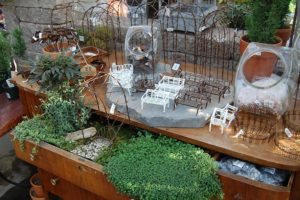


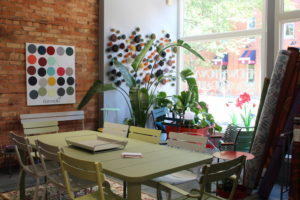
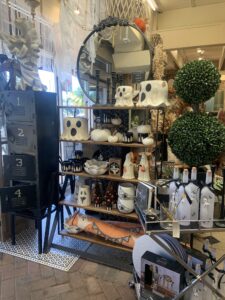
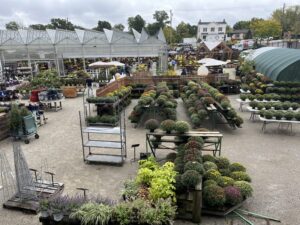
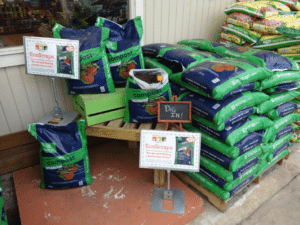

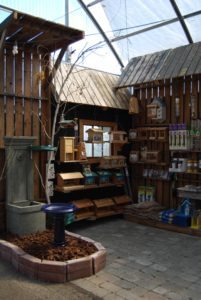


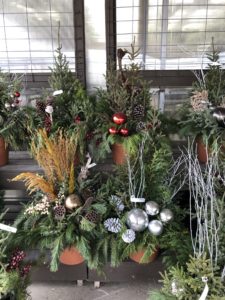
 Videos
Videos





